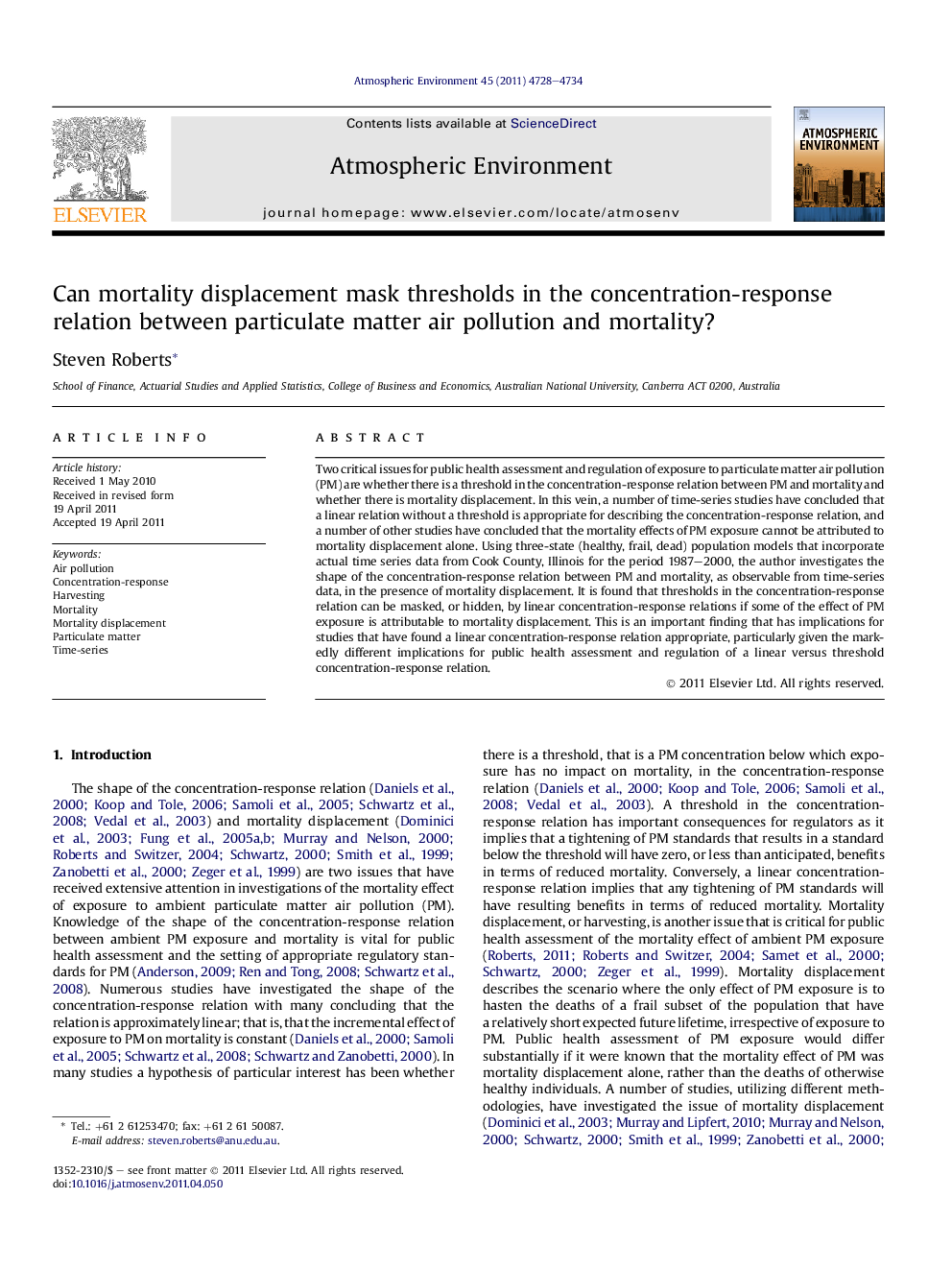| Article ID | Journal | Published Year | Pages | File Type |
|---|---|---|---|---|
| 4439768 | Atmospheric Environment | 2011 | 7 Pages |
Two critical issues for public health assessment and regulation of exposure to particulate matter air pollution (PM) are whether there is a threshold in the concentration-response relation between PM and mortality and whether there is mortality displacement. In this vein, a number of time-series studies have concluded that a linear relation without a threshold is appropriate for describing the concentration-response relation, and a number of other studies have concluded that the mortality effects of PM exposure cannot be attributed to mortality displacement alone. Using three-state (healthy, frail, dead) population models that incorporate actual time series data from Cook County, Illinois for the period 1987–2000, the author investigates the shape of the concentration-response relation between PM and mortality, as observable from time-series data, in the presence of mortality displacement. It is found that thresholds in the concentration-response relation can be masked, or hidden, by linear concentration-response relations if some of the effect of PM exposure is attributable to mortality displacement. This is an important finding that has implications for studies that have found a linear concentration-response relation appropriate, particularly given the markedly different implications for public health assessment and regulation of a linear versus threshold concentration-response relation.
► We use a three-state (healthy, frail, dead) population model to simulate mortality that exhibit mortality displacement. ► We are interested in the relation between particulate matter (PM) air pollution and entry into the frail population. ► We find that mortality displacement can mask the relation between PM and entry into the frail population.
